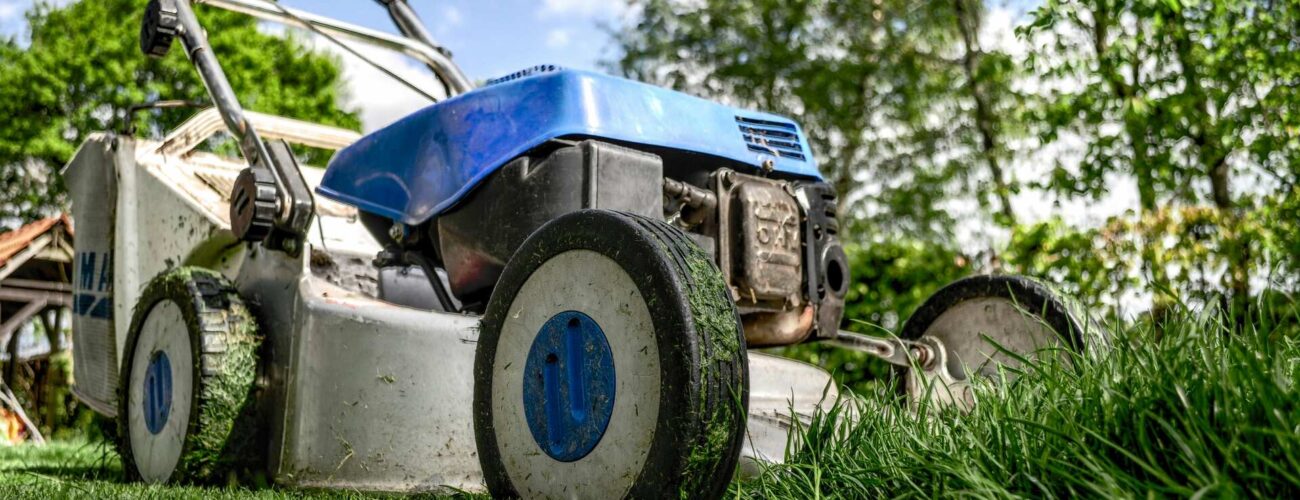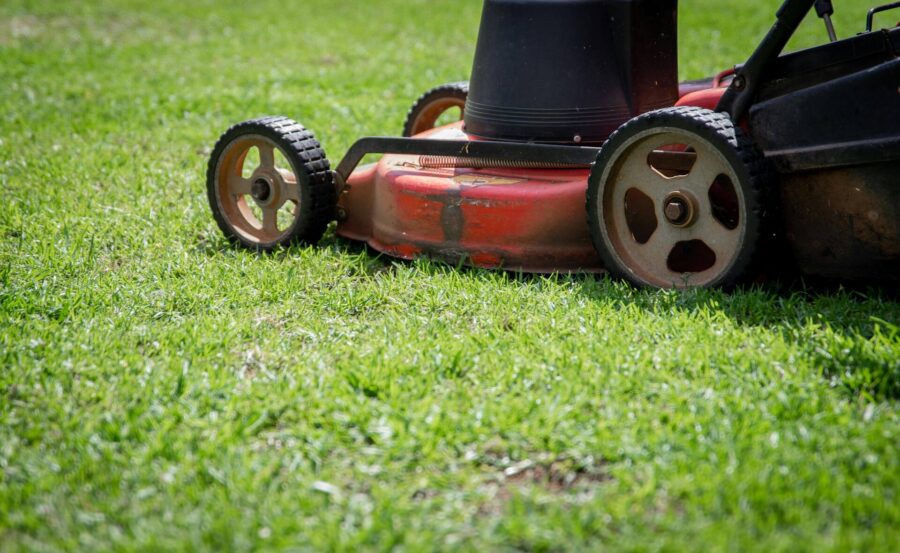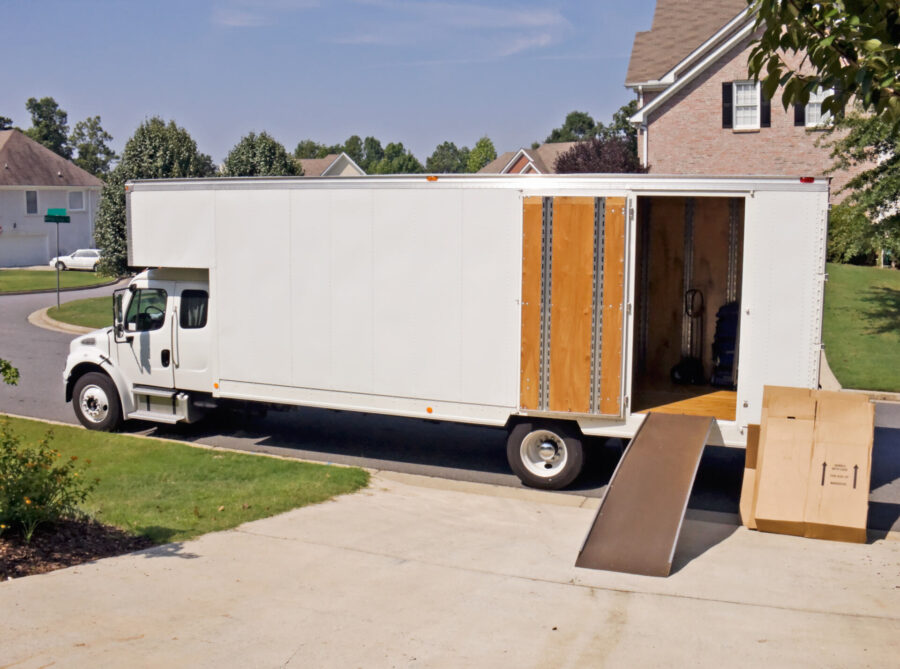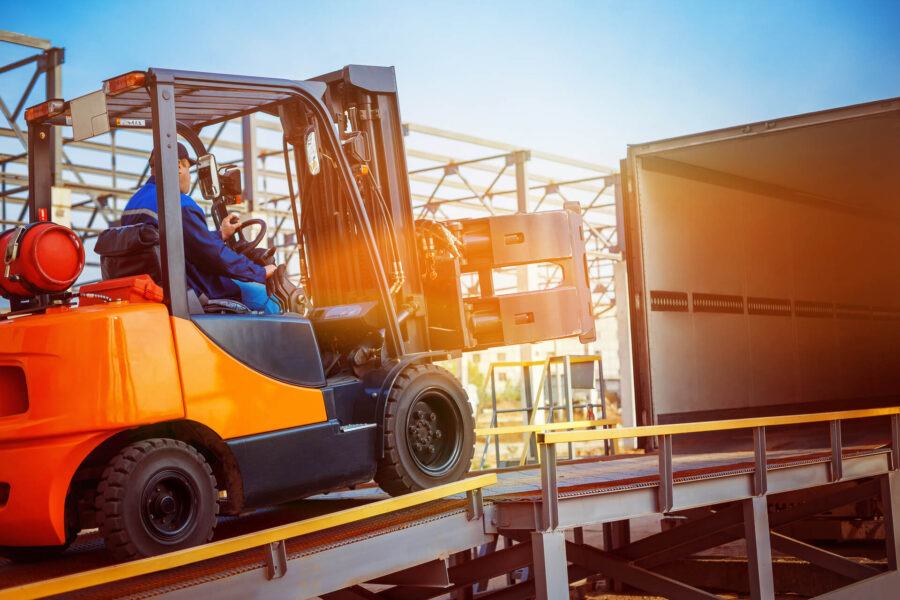

A Cut Above – The Essential Guide to Moving a Lawn Mower Safely
Posted in Moving Essentials on March 15, 2024
Moving a lawn mower, whether you’re a homeowner with a small patch of green or a landscaping professional with a fleet of mowers, requires careful preparation and planning. This guide walks you through all the required steps of the process. We’ll cover how to transport a riding lawn mower and standard models, offering lawn mower transportationa tips that cater to your long-distance mower transport needs.
To move a lawn mower safely, start by cleaning it and conducting maintenance checks. Drain all fluids, like fuel and oil, to prevent leaks and remove the spark plug wire for safety. If possible, disassemble removable parts to make transportation easier. Secure the mower with straps in a moving truck to avoid movement during transit, and use cushioning materials to protect it from damage. Following these steps ensures the safe relocation of your garden equipment.
Prep Your Lawn Mower for the Big Move By Following Some Essential Steps
Before embarking on your lawn mower’s relocation journey, it’s crucial to get it ready. This means you have to plan the move to ensure your gardening device is prepped and safe for transport. Whether you’re relocating across town or across the country, these initial steps are vital for a smooth transition.
Whether you’re relocating across town or across the country, these initial steps are vital for a smooth transition.
After all, you want to safely ship all of your belongings, especially the valuable and fragile ones, right? Just consider that the Honda Mean Mower V2 holds the title of the most expensive one on the market with a price of $120,000.
Cleaning and Maintenance Steps Will Ensure a Safe Transport
It’s pretty much the same as you should clean the apartment before settling in, right? So, before setting off on your relocation journey, giving your trimmer a thorough cleaning and maintenance check is crucial for safe transport. This includes removing any accumulated debris and grass clippings, especially from under the carriage and around the blades.
Ensuring the blades are sharp and free from damage prepares your mower for immediate use at the new home. This preparatory step is essential for a smooth transition and efficient relocation, safeguarding the valuable equipment and ensuring it remains in top condition.
Drain Fluids – A Must-Do for Preventing Leaks and Damage
One of the things to consider, that, in fact, many people forget, is draining the fuel and oil from your equipment.
By not making this mistake, you’ll prevent leaks and potential damage.
This process not only safeguards your mower during transport but also protects your other belongings from contamination.
Carefully draining these fluids and properly disposing of them according to local regulations ensures a safe and environmentally responsible move. This precautionary measure helps avoid any messy accidents, making your relocation smoother and worry-free.

Be Sure You’ve Chosen the Right Transportation Method for Your Mower
Not all mowers are created equal, and neither are the methods for transporting them. From push mowers to ride-on behemoths, selecting the right vehicle and equipment for transportation is key. Let’s explore how to match your mower with the appropriate transport method, including when to consider renting trailers and ramps for the journey ahead.
If you’re too occupied with organizing the relocation, leave this task for the professional Cross Country Movers. We have many years of experience in car shipping and all other cross-country moving services needs.
Evaluating Different Types of Mowers and Appropriate Vehicles
Your lawn mower’s size and type dictate the best way to transport it. Small, push models might easily fit into a van, but a riding mower will likely require a trailer. Consider the dimensions and weight of your mower and choose a vehicle that accommodates these specifications safely.
Renting Moving Equipment – Trailers and Ramps for Larger Mowers
For those moving cross-country with larger mowers, renting appropriate equipment is a must. Trailers provide the space needed for larger equipment, while ramps facilitate easier loading and unloading. Cross-country relocation services often offer these rentals as part of their package.
For those with larger, heavier mowers, renting the right moving equipment is essential. A suitable trailer and ramp can make loading and unloading much simpler and safer. Ensure the equipment you choose can securely hold your mower in place during transport, preventing any movement that could lead to damage.

Securely Packing Your Lawn Mower – Explore the Best Practices
Packing a lawn mower for moving across the country not only protects it during the move but also ensures the safety of everyone involved in the relocation process. Equip yourself with some of the best packing strategies and practices for disassembling, cushioning, and strapping down your mower. Rest assured it arrives at your new home in the same condition it left.
Safely Disassembling Parts for Compact Packing
Disassembling a mower for moving can make the process more manageable. Removing parts like the mower handle, blades, and attachments can reduce the size of your mower, making it easier to pack and secure. This all means you’ll have to prepare before the disassembling process – getting different wrapping materials and learning some handy tips for the efficient protection process.
Use the Straps and Cushioning for Stability and Utmost Protection
Secure lawn mower loading involves using straps to fasten the mower in place, preventing movement during transit. Cushioning materials can protect it from scratches and damage. Packing the machine for relocation requires attention to detail to ensure it arrives in the same condition it left. However, partnering with experienced long-distance movers and their packing service, you won’t have to worry about a thing.

How to Transport a Lawn Mower – Understand Loading and Unloading Your Device
Every step of the loading and unloading phase of relocating such equipment requires careful planning and execution. You should learn some effective techniques for lifting, loading, and unloading your mower safely, minimizing the risk of injury and damage. Whether you’re an experienced mover or a first-timer, these guidelines will help you navigate the process with ease.
Techniques for Safe Lifting and Loading
When loading such a device, always lift with your legs, not your back, to avoid injury. If possible, use a loading ramp for heavier models to reduce the risk of accidents. Lawn mower moving safety is a must because only then will both your well-being and the mower be protected.
Unloading Safely at Your New Destination
Unloading a lawn mower safely involves reversing the loading process. Be cautious and methodical, ensuring the path is clear and the mower is secure before attempting to move it. After all, you want to have successful long-distance moving and this means you have to ensure all of the belongings are transported with the utmost care.

Setting Up Your Lawn Mower in the New Location
After a successful relocation, the next step is getting it ready for its new environment. Be sure to reassemble the machine correctly, and do the post-move maintenance checks and adjustments needed for different lawn types and environments. Get your mower up and running smoothly with our tips for a seamless transition to a new home and its lawn care needs.
How to Reassemble It and Do Post-Move Maintenance Checks?
Once the mower has arrived, reassemble any parts that were removed and perform a thorough maintenance check. This includes checking the oil level, ensuring the blades are sharp and secure, and that all parts are functioning correctly. Lawn mower maintenance pre-move can significantly influence its post-move performance.
Tips for Adjusting to New Lawn Types and Environments
After the stress-free relocation, you’ll have to do some adjusting to new lawn types and environments. It could require changing your mowing habits or equipment settings. Consider the local grass type, moisture levels, and terrain when setting up your mower for its first use in a new location.

Special Considerations for Long-Distance Moves
Transporting this kind of equipment long distances presents unique challenges, from climate changes to extended transit times. This being said, there are some special considerations to keep in mind.
For example, how to secure your mower for the long haul (when relocating from the East to West Coast, and vice versa – from West to East Coast) and what to expect in terms of pressure and climate adjustments. Whether you’re using long-distance moving services or tackling the move yourself, these insights will ensure the mower’s journey is as smooth as your lawn.
Climate and Pressure Changes – What to Expect?
Long-distance moves, especially moving across the country, can expose your lawn mower to different climates and pressure changes. These can affect your mower’s performance and may require adjustments or maintenance upon arrival.
Secure Your Lawn Mower for Extended Transit
For extended transit, especially during cross-country moves, securely fastening your mower is crucial. Utilizing straps or tie-downs ensures the mower remains stable and prevents any movement that might cause damage. Properly securing the mower not only protects its components but also gives you peace of mind throughout the journey. This step is essential in safeguarding the mower against the wear and tear of long-distance travel, ensuring it arrives at a new destination ready for use.

Moving a Lawn Mower – Have a Smooth Experience With Professional Movers
Moving with a lawn mower, from compact push models to larger riding mowers, requires careful planning and preparation. By following these steps, you can ensure that the lawn mower is moved safely and is ready to keep your new lawn looking its best.
The safety and security of your lawn equipment should always be a top priority. Don’t worry, Cross Country Movers will give you a helping hand with our top-notch long-distance moving services! Contact us and experience a smooth and successful lawn mower relocation, a cut above the rest!
Frequently Asked Questions
How Do I Prepare My Lawn Mower for a Move?
To prepare mowing equipment for a move, start by cleaning it thoroughly and checking for any necessary repairs. Next, drain all fluids like fuel and oil to prevent leaks, and disconnect the spark plug for safety. If possible, disassemble removable parts to make it more compact and easier to transport.
What’s the Best Way to Drain Fluids From a Lawn Mower Before Moving?
The best way to drain fluids is to first run it until the fuel is used up, then tilt the mower carefully to drain oil into a suitable container. Always use gloves and eye protection, and follow the manufacturer’s guidelines for draining.
Can I Transport My Lawn Mower in a Regular Moving Truck?
Yes, you can transport it in a regular moving truck, but it should be properly prepared first. Drain all fluids to prevent spills, secure loose parts, and if possible, fold down the handle. Secure the mower with straps to prevent it from shifting during transport.







